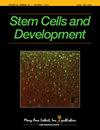Th2 Cytokines IL-4, IL-13, and IL-10 Promote Differentiation of Pro-Lymphatic Progenitors Derived from Bone Marrow Myeloid Precursors
IF 2.5
3区 医学
Q3 CELL & TISSUE ENGINEERING
引用次数: 8
Abstract
Myeloid-lymphatic endothelial cell progenitors (M-LECP) are a subset of bone marrow (BM)-derived cells characterized by expression of M2-type macrophage markers. We previously showed significant contribution of M-LECP to tumor lymphatic formation and metastasis in human clinical breast tumors and corresponding mouse models. Since M2 type is induced in macrophages by immunosuppressive Th2 cytokines IL-4, IL-13, and IL-10, we hypothesized that these factors might promote pro-lymphatic specification of M-LECP during their differentiation from BM myeloid precursors. To test this hypothesis, we analyzed expression of Th2 cytokines and their receptors in mouse BM cells under conditions leading to M-LECP differentiation, namely, CSF-1 treatment followed by activation of TLR4. We found that under these conditions, all three Th2 receptors were strongly upregulated in >95% of the cells that also secrete endogenous IL-10, but not IL-4 or IL-13 ligands. However, addition of any of the Th2 factors to CSF-1 primed cells significantly increased generation of myeloid-lymphatic progenitors as indicated by co-induction of lymphatic-specific (eg, Lyve-1, integrin-a9, collectin-12, and stabilin-1) and M2-type markers (eg, CD163, CD204, CD206, and PD-L1). Antibody-mediated blockade of either IL-10 receptor (IL-10R) or IL-10 ligand significantly reduced both immunosuppressive and lymphatic phenotypes. Moreover, tumor-recruited Lyve-1+ lymphatic progenitors in vivo expressed all Th2 receptors as well as corresponding ligands, including IL-4 and IL-13, which were absent in BM cells. This study presents original evidence for the significant role of Th2 cytokines in co-development of immunosuppressive and lymphatic phenotypes in tumor-recruited M2-type myeloid cells. Progenitor-mediated increase in lymphatic vessels can enhance immunosuppression by physical removal of stimulatory immune cells. Thus, targeting Th2 pathways might simultaneously relieve immunosuppression and inhibit differentiation of pro-lymphatic progenitors that ultimately promote tumor spread.Th2细胞因子IL-4、IL-13和IL-10促进来源于骨髓髓系前体的前淋巴祖细胞分化
骨髓淋巴管内皮细胞祖细胞(M-LECP)是骨髓(BM)衍生细胞的一个子集,其特征是M2型巨噬细胞标志物的表达。我们之前在人类临床乳腺肿瘤和相应的小鼠模型中显示了M-LECP对肿瘤淋巴结形成和转移的显著贡献。由于M2型是由免疫抑制性Th2细胞因子IL-4、IL-13和IL-10在巨噬细胞中诱导的,我们假设这些因子可能在M-LECP从骨髓前体分化过程中促进其淋巴前特异性。为了验证这一假设,我们分析了在导致M-LECP分化的条件下,即CSF-1处理后TLR4激活的小鼠骨髓细胞中Th2细胞因子及其受体的表达。我们发现,在这些条件下,所有三种Th2受体在>95%的细胞中都强烈上调,这些细胞也分泌内源性IL-10,但不分泌IL-4或IL-13配体。然而,将任何Th2因子添加到CSF-1引发的细胞中显著增加了髓系淋巴祖细胞的生成,如淋巴特异性(如Lyve-1、整合素a9、collectin-12和stabilin-1)和M2型标记物(如CD163、CD204、CD206和PD-L1)的共诱导所示。抗体介导的IL-10受体(IL-10R)或IL-10配体的阻断显著降低了免疫抑制和淋巴表型。此外,肿瘤募集的Lyve-1+淋巴祖细胞在体内表达所有Th2受体以及相应的配体,包括IL-4和IL-13,这些配体在BM细胞中不存在。本研究为Th2细胞因子在肿瘤募集的M2型髓细胞中免疫抑制和淋巴表型的共同发展中的重要作用提供了原始证据。祖细胞介导的淋巴管增加可以通过物理去除刺激性免疫细胞来增强免疫抑制。因此,靶向Th2途径可能同时缓解免疫抑制并抑制最终促进肿瘤扩散的前淋巴祖细胞的分化。
本文章由计算机程序翻译,如有差异,请以英文原文为准。
求助全文
约1分钟内获得全文
求助全文
来源期刊

Stem cells and development
医学-细胞与组织工程
CiteScore
7.80
自引率
2.50%
发文量
69
审稿时长
3 months
期刊介绍:
Stem Cells and Development is globally recognized as the trusted source for critical, even controversial coverage of emerging hypotheses and novel findings. With a focus on stem cells of all tissue types and their potential therapeutic applications, the Journal provides clinical, basic, and translational scientists with cutting-edge research and findings.
Stem Cells and Development coverage includes:
Embryogenesis and adult counterparts of this process
Physical processes linking stem cells, primary cell function, and structural development
Hypotheses exploring the relationship between genotype and phenotype
Development of vasculature, CNS, and other germ layer development and defects
Pluripotentiality of embryonic and somatic stem cells
The role of genetic and epigenetic factors in development
 求助内容:
求助内容: 应助结果提醒方式:
应助结果提醒方式:


